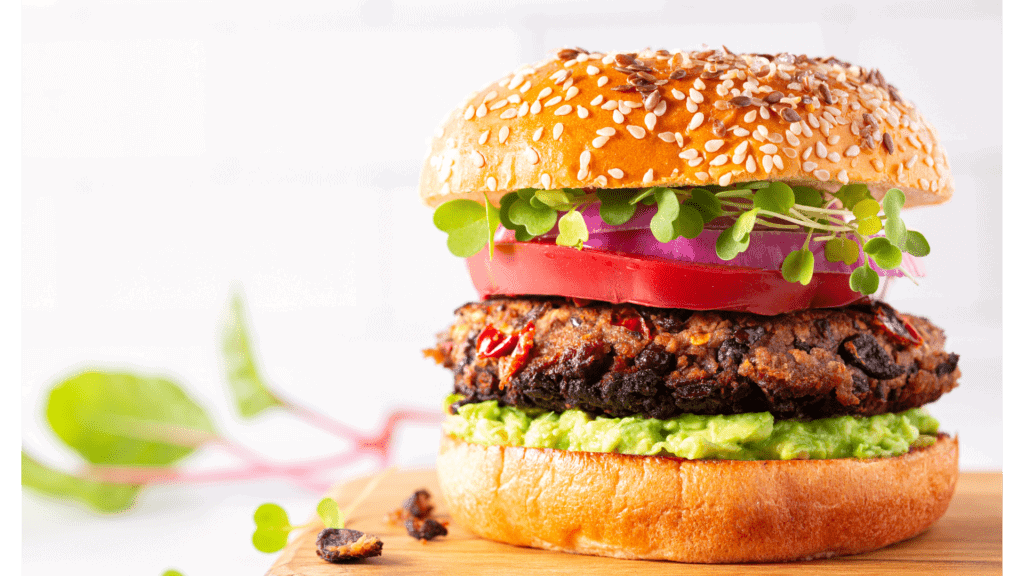In recent years, the way consumers choose, compare and buy their food has changed dramatically, and many companies have taken notice. As 2023 moves forward, food developers and manufacturers need to know where these changes are going and how they can stay ahead of the curve. Beyond that, understanding how to address these trends without sacrificing taste is essential to making these trends work for you this year.
Our trends for 2023[1] are:
- Redefining Value
- Affordable Nutrition
- Plant-based
Redefining Value: More Important than Price
When people think of “value,” the first thing that always comes to mind is price. “Is it worth the money I’m paying for this product?”
But despite the current economic situation, this is not necessarily how today’s consumers will judge the value of your product. In 2023, it’s not always about what’s cheaper; rather, it’s about what’s healthier, more sustainable, more convenient or simply what tastes better.

Instead of trying to save money by buying what has the lowest price, many consumers are beginning to cut back on certain items so they can continue to buy the products that really matter to them and their quality of life. This is evident in the US Consumer Pulse Survey conducted by McKinsey & Co. which reported that 74% of consumers are changing their shopping behavior to get more for their money. What that “more” means may be different for each consumer.
This is the meaning of redefining value; what is it about your product that keeps your customers coming back again and again? Is it the freshness? The sweetness? A combination of taste and texture? Or, perhaps, it’s the user experience the consumer has from the moment they see the package to the moment they get it on their plate.
Finding your specific definition of value requires thinking more holistically about what drives taste for your product. There are many options where you can reduce costs that are not the reason your customer keeps buying your product. Once you have identified what makes your consumers buy your product, you cannot sacrifice that factor.
While it is possible to reduce costs through packaging changes or marketing strategies, sometimes the only option is to modify your product. Introducing less expensive ingredients or utilizing commodity reduction are great ways to get your numbers where they need to be, but regardless of the approach, maintaining customer expectations for your products should remain your number one priority.
Let’s take sponge cake as an example. The first thing that comes to mind is butter flavor, which is also a commodity whose prices and availability are constantly changing. However, simply reducing the amount of butter flavor to save costs runs the risk of altering the flavors and texture of the cake, which could negatively influence consumer taste.
In addition to the strong characteristic butter profile, customers may also appreciate the dense but somewhat soft texture of the cake. The reality is that in addition to taste, commodity products often have functions that are critical to the product as well as to the value perceived by customers.

With our sensory-based approach, we can help you achieve the right balance between commodity reduction and replacement ingredients. For example, with sponge cake we can find the right ratio of fats, flavor and any remaining butter to get the cost savings you need without having to sacrifice the richness and buttery texture your customers value and expect.
Affordable Nutrition – Making Healthy Choices Affordable
Even when customers are looking for ways to save money, they want to do so without sacrificing nutrition. What this means is that companies that can prioritize affordable nutritional decision making are in an excellent position to take advantage of this trend.
I believe this momentum will be easier to see in plant-based products, especially as more people enter this market segment.
Although most consider plant-based milks to be a “healthy choice” and milks such as oat and almond are becoming preferred, the nutritional difference between plant-based and traditional dairy products remains a major stumbling block.
This may not matter much for your latte, but matching protein levels and achieving the nutritional standard inherent in dairy products, while remaining affordable, is certainly a difficult task for plant-based food developers.
Many are turning to fortification as a possible solution. However, this cannot happen without facing a number of taste challenges.

Although many ingredient suppliers are working to produce “cleaner” vegetable proteins, they often introduce unpleasant or undesirable notes that will require masking or masking.
Pea protein, for example, while becoming extremely popular for its nutritional profile, can introduce undesirable vegetable or bitter notes.
Depending on your product, adding masking flavors may be the solution to reduce or even eliminate unpleasant notes that could distract consumers. In other situations, product developers can add flavors to the profile that complement existing notes. For example, take the nutty flavor found in a vegetable protein and use it to your advantage to create a well-balanced romano cheese.
Regardless of your approach, this is where flavor can help you find the balance between affordable nutrition and a delicious product, getting the best of both worlds.
Plant-Based – A World of Alternatives
As the plant-based market continues to grow, manufacturers and developers are finding more room to play and innovate beyond what was previously thought possible. So much so that new processes and technologies are looking to push this industry beyond the “plant-based” label to more appropriate titles such as “alternative dairy” or “animal-free.”

With revolutionary new fermentation, cellular and chemical processes, developers are working on new ways to improve nutrition, address sustainability and, in some cases, omit plants altogether. Some of these new “animal-free” technologies even have the potential to mimic traditional dairy products at the molecular level, opening up endless possibilities for expanding the alternative space.
Another area of alternative and plant-based products that is a real growth opportunity is hybrid products. The largest food companies are already analyzing the possibilities that could be unlocked through such products.
Despite the tremendous promise of all these new technologies and potential products, taste will always be the main factor; that is, to get consumers to accept these new technologies, taste will have to play a key role in their development. Hybrid products allow taste, texture and function to more closely mimic the fully animal-derived counterpart, while offering nutritional and sustainability benefits, as plant-based products can.
If this is achieved, these types of products could end up dominating the dairy alternative space.
Be sure to check out our top trends for 2023 video with Edlong experts, Bernd Koehler, Global VP of R&D, and Anne Marie Butler, Global Director of Strategy and Innovation to learn more about these trends!
About the Author: Julie Drainville, Sensory Manager
Julie Drainville manages all of Edlong’s sensory functions globally, keeps employees trained for sensory testing and also collaborates with application scientists and customers to execute tests to meet project needs. Julie has extensive experience in the food science field including over 15 years in the sensory field, a degree from Purdue University in Food, Nutrition and Business/Dietetics, a Master of Science in Nutrition Education from Rosalind Franklin University and completion of the UC Davis Applied Sensory and Consumer Science certificate program.
[1] From Innova Market Insights
Topics: Commodity reductionInnovationVegan
Resource Type: Article
